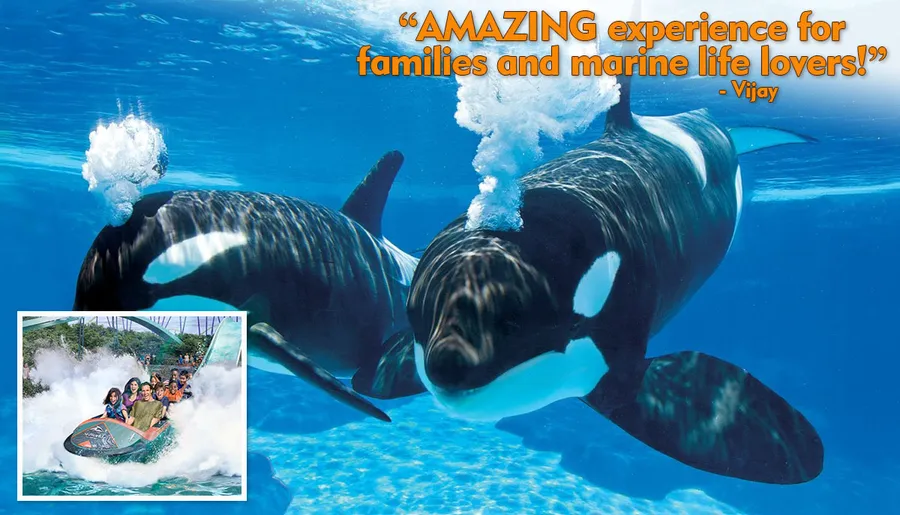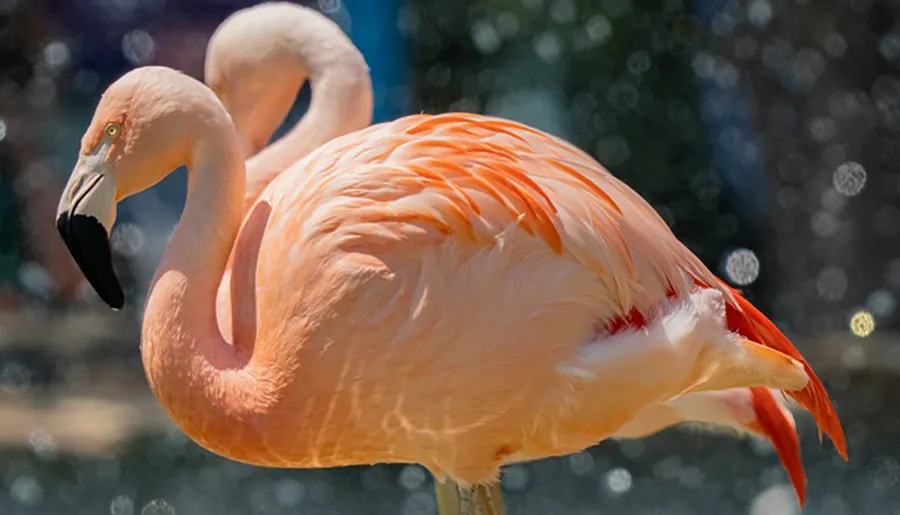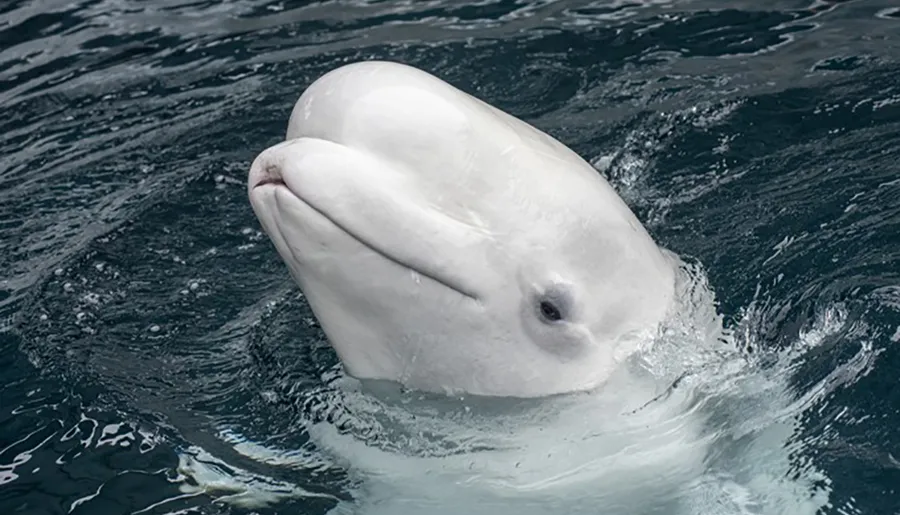SeaWorld: Biography of the Theme Park Giant
At three prestigious locations across the United States, SeaWorld Parks offer guests a wide array of exciting shows, thrilling rides, and educational encounters with the animals. From killer whales to sea lions, dolphins and sea turtles, SeaWorld has an awesome collection of marine mammals for visitors to discover and learn about.
History
In 1964, SeaWorld was opened by four UCLA graduates: Milton C. Shedd, Ken Norris, David Demott, and George Millay. The founders set out to build an underwater restaurant and marine life show, but the restaurant plans were quickly scrapped, and the group decided to build a marine mammal park instead. How many Sea worlds are there?
SeaWorld San Diego was opened on March 21, 1964, and although it only had a few dolphins and sea lions, six attractions, and 22 acres, the park was a success. More than 400,000 people visited in the first year. This success led to the opening of the second location in Aurora, Ohio in 1970, but the harsh weather meant the park could only be open from mid-May to mid-September. Later, a third site was opened in Orlando, Florida in 1973 after the founders saw the success that Walt Disney World Resort had at that location. This established Orlando as a multi-park destination vacation and opened the gates to more theme parks.
In 1976, Harcourt Brace Jovanovich, Inc. (HBJ) purchased the company, and 12 years later, they opened a new SeaWorld in San Antonio, Texas. However, the stress and financial resources it took to build and maintain a state-of-the-art marine mammal facility was difficult for the company, and in order to avoid bankruptcy, HBJ sought out buyers for SeaWorld and two other parks. The parks were purchased by the Anheuser-Busch Company in 1989.
Unlike HBJ, Anheuser-Busch had experience in managing animal exhibits and building thrill rides because of its own Busch Gardens, and the company was able to fully develop SeaWorld Orlando into what it is today. In the competitive market, which includes four Disney and two Universal theme parks, SeaWorld Orlando became a top destination for visitors. In short, Anheuser-Busch was able to completely revitalize the SeaWorld parks.
In the late 90s, the parks began opening unique rides, including floorless roller coasters and fun combination rides. They also began combining rides with shows to create an awesome two-for -one experience that is still used today.
In 2001, the SeaWorld park in Aurora, Ohio was closed, as the limiting weather conditions and local restrictions that prohibited building amusement rides meant the park was not as successful as the others. Where the SeaWorld park once stood is now the site of Cedar Fair's Wildwater Kingdom water park.
In 2008, the Anheuser-Busch Company was bought by Belgian brewer InBev, and the new company sold the SeaWorld and Busch Gardens parks to a private equity firm the following year. The firm, then known as the Blackstone Group, was renamed SeaWorld Entertainment. At this time, the small water park Aquatica was opened in Orlando near SeaWorld, and the company later copied this on a smaller scale near the SeaWorlds in San Diego and San Antonio.
Today, SeaWorld continues to develop unique attractions and provide intense and awing animal encounters for its guests.
So just how many Sea Worlds are there?
SeaWorld San Diego: The First Park
The original park in San Diego opened on March 21, 1964 and features a number of shows, rides, stadiums, exhibits, and other attractions. The park itself sits on almost 200 acres of land and water, where the animals can swim and play.
SeaWorld San Diego houses eleven killer whales - Corky, Kasatka, Ulises, Orkid, Nakai, Ikaika, Kalia, Keet, Shouka, Makani, and Amaya - along with many other marine animals. Guests can get up-close and personal with penguins, bottlenose dolphins, sea turtles, sharks, and more as they learn about the amazing world under the water. One of the best times to visit is during feeding time, as guests are able to hand-feed some of the animals, like bat rays and sea lions.
Visitors can enjoy family-friendly live shows like One Ocean, the current Shamu show; Sea Lions Live, a comedic show with sea lions and otters with a 30-minute pre-show, and Dolphin Days, a dolphin show. They can also hop aboard rides like Journey to Atlantis, a splashdown ride that is like a roller coaster. Some of the best rides include Manta, Shipwreck Rapids, and Journey to Atlantis. Those with little kids can head over to the Sesame Street Bay of Play, which is full of family-friends rides for children. Evening shows are followed by a spectacular fireworks show.
SeaWorld Orlando
SeaWorld Orlando opened on December 15, 1973, and is the most popular of SeaWorld's parks, though it was the third location created by the company. The park is divided into different areas, each with a unique theme, and visitors can get a glimpse of the different types of animals as they move from “sea” to “sea,” starting at the Port of Entry, the main entrance.
Seven killer whales, Katina, Tilikum, Kayla, Trua, Nalani, Makaio, and Malia, live at the Orlando location, although the park houses many other animal exhibits throughout its acreage. Visitors to the Sea of Shallows can see bottlenose dolphins, flamingos, stingrays, sea turtles, and more. They can stop by the Sea of Legends for a look at the mysterious myths and tales told about the sea. Pets Ahoy, the only land animal show at the park, is located at the Sea of Delight, and for those wanting to see the park's iconic killer whale shows, head over to the Sea of Power, where Shamu Stadium is located.
With shows like One Ocean, the newest Shamu show; Blue Horizons, a dolphin show; and Clyde and Seamore's Sea Lion High; SeaWorld offers plenty of entertainment. The park contains four roller coasters, including a floorless coaster based on the mythical sea creature, Kraken. SeaWorld After Dark is the Orlando park's night program, which features a number of animal shows and fireworks.
SeaWorld San Antonio
The final park, SeaWorld San Antonio, opened on May 27, 1988, and it offers guests a wide array of exhibits, shows, and more. San Antonio has five killer whales - Kyuquot, Takara, Sakari, Tuar, and Kamea - and a number of dolphins, beluga whales, and other beautiful marine animals.
Guests should head to Dolphin Lagoon, the centerpiece of Discovery Point. This tucked-away oasis that officially opened on May 21, 2016, to experience dolphins in a whole new way and observe them from above and below the surface with naturalistic viewing areas. At Pacific Point Preserve, you can see seals, sea lions, and otters in a west-coastal themed habitat, or see a naturalistic coral reef, complete with tropical fish, stingrays, and a variety of sharks at Explorer's Reef. Visitors can also see American alligators, flamingos, and more throughout the park.
Guests can check out many family-friendly, live shows, including the San Antonio version of One Ocean - Azul - a show combining high diving, synchronized swimming, Pacific white-sided dolphins, and beluga whales; and The Cannery Row Caper, a sea lion mystery show. For a comical show featuring talented dogs, cats, birds, rats, and other animals that were rescued from shelters in the San Antonio area, head to the Sea Star Theater for Pets Ahoy!
Hop on The Great White, an inverted roller coaster; Steel Eel, a roller coaster that reaches a height of 150 feet; and Journey to Atlantis, a water roller coaster into the mythical land of Atlantis. A number of other rides, also inspired by the force and power of the sea, are available. Young children can visit the Sesame Street Bay of Play for an interactive children's play area based on the long-running kids' show.
Animal Rights
Throughout its history, SeaWorld's main attraction has remained its killer whales, which are housed in 5.8-million-gallon tanks, each called Shamu Stadium after the first killer whale from SeaWorld San Diego in the 1960s. However, a number of organizations like World Animal Protection and the Whale and Dolphin Conservation Society take a strong stance against the captivity of dolphins and killer whales for several reasons.
As space is limited in captivity, aggression among the killer whales is common, and throughout SeaWorld's history, more dominant whales have often become violent toward other whales or their trainers. In February 2010, an experienced trainer at the Orlando park named Dawn Brancheau was killed by killer whale Tilikum after a show in Shamu Stadium. This 40-year-old trainer with 16 years of experience at the park was dragged under the water by her left forearm near the end of a show. The park received three OSHA citations after the death, the company was fined $12,000, and trainers were banned from making close contact with the whales.
In 2013, the story of Tilikum was documented in the film Blackfish, which addressed the treatment of killer whales in captivity. Tilikum, the largest whale at SeaWorld, was captured by SeaLand of the Pacific and later transported to SeaWorld Orlando. He was involved in the deaths of two other people prior to the 2010 incident. Although SeaWorld disputes the accuracy of the film, many musical artists, including Martina McBride and Cheap Trick, canceled scheduled concerts at the parks following its release.
The next year, SeaWorld announced its plans to build new killer whale tanks double the size of the existing ones so the whales have more space. Wild killer whales travel up to 100 miles in a day, and many critics, including PETA, say the whales are too big and intelligent to be captive and should instead be held in seaside sanctuaries. Before granting SeaWorld permission to build these new tanks, the California Coastal Commission ruled that they ban captive breeding, and on March 17, 2016, SeaWorld announced the end of their breeding program, though one whale was still pregnant at the time.
Conservation Efforts
Since its inception, SeaWorld Parks & Entertainment has rescued or helped more than 28,000 animals, including ill, orphaned, or abandoned and injured manatees, dolphins, pilot whales, sea turtles, and birds. The company's conservation program works in cooperation with the Department of the Interior, National Marine Fisheries Service, and state agencies, as well as with the Marine Mammal Protection Act of 1972 and the Endangered Species Act of 1973.
Due to its animal rehabilitation program, SeaWorld is credited with the first birth of a killer whale in captivity, the first birth of a marine mammal via artificial insemination, and the first hatching of captive green sea turtles. SeaWorld works to make sure that every animal they rescue is successfully rehabilitated and returned to the wild. Only a small percentage of the animals have conditions that would prevent them from surviving in the wild, and they are given lifelong care at SeaWorld or another accredited facility. Some of the many awesome things SeaWorld's animal experts have done to help these animals include creating nutritional formulas and hand-feeding orphaned animals, using honey and baby ointment to heal sea turtles with cracked shells, creating prosthetic beaks for injured birds, and developing an “animal wetsuit” for injured manatees to stay afloat.
In an effort to help conservation, SeaWorld supports research into the animals they house and rescue. The company has published more than 300 of their own research studies to help advance the global scientific community's understanding of animals, and their parks provide a unique opportunity for the SeaWorld team and outside researchers and scientists to better understand marine animals. SeaWorld has spent millions of dollars conserving wild animals and wild places, and the company works to inspire and educate the millions of guests who visit the three parks each year.
The Future of SeaWorld
In early 2016, in an effort to put the health and well-being of the orcas first, SeaWorld announced the end of its killer whale breeding program, making the orcas at the parks the last generation of killer whales. “SeaWorld has introduced more than 400 million guests to orcas, and we are proud of our part in contributing to the human understanding of these animals,” said Joel Manby, President and Chief Executive Officer of SeaWorld Entertainment. “We've helped make orcas among the most beloved marine mammals on the planet. As society's understanding of orcas continues to change, SeaWorld is changing with it. By making this the last generation of orcas in our care and reimagining how guests will experience these beautiful animals, we are fulfilling our mission of providing visitors to our parks with experiences that matter.”
As most of the animals were born in captivity and would not be able to flourish in the wild, the killer whales will live the rest of their days at SeaWorld's state-of-the-art habitats – and things will only get better. As the whales age, SeaWorld intends to change the animals' habitats and performances. Habitats will be more natural-looking, and the killer whale encounters will have an added emphasis on education and conservation. Theatrical shows will end at SeaWorld San Diego in 2017 and in Orlando and San Antonio in 2019.
The parks will introduce new orca encounters rather than theatrical shows as part of their ongoing commitment to education, marine science research, and the rescue of marine animals. Everything about the new orca experience will reflect the natural world and focus on the research, education, care, and respect in order to advance the company's well-being and conservation of the beautiful animals. These programs will focus on orca enrichment, exercise, and overall health.
SeaWorld has committed $50 million over the next five years to support conservation and rescue groups with the goal of being the world's leading marine animal rescue organization.
With locations in Orlando, San Diego, and San Antonio, these parks have a long history of providing entertainment and education to their visitors, but the marine mammal collections have also been the subject of public debate throughout the years. As scrutiny of the parks' mammal treatment and use has escalated, SeaWorld has risen to the challenge and seeks to make its park features more accommodating for its animals and help fund scientific studies and the care of animals in the wild. Enjoy many other great adventures and stay in the beautiful area with a luxury hotel today. Get the best deals for all attractions, hotels, and more with a vacation package to San Antonio.




